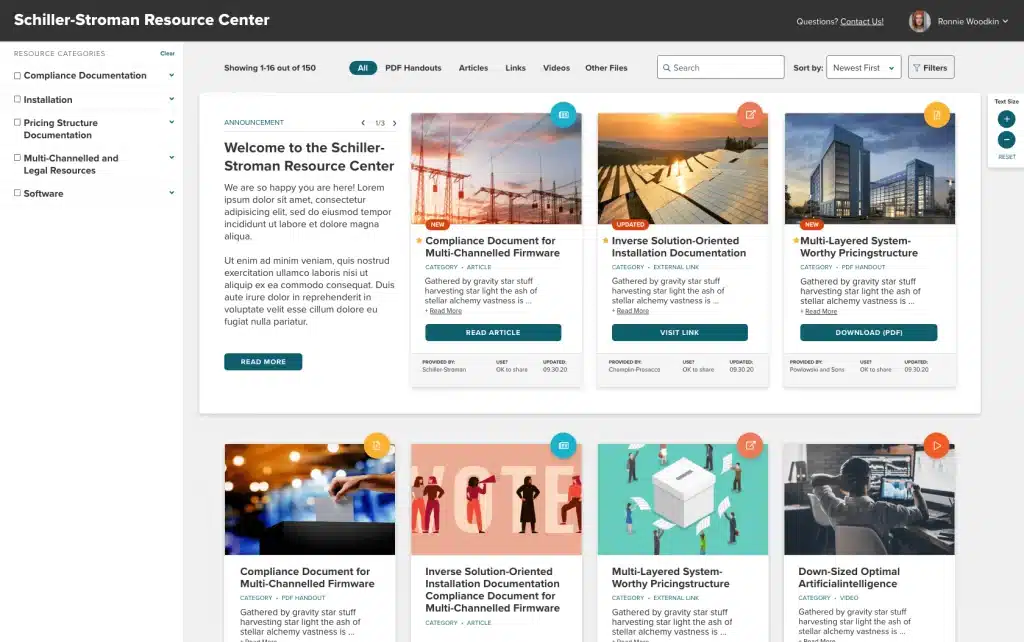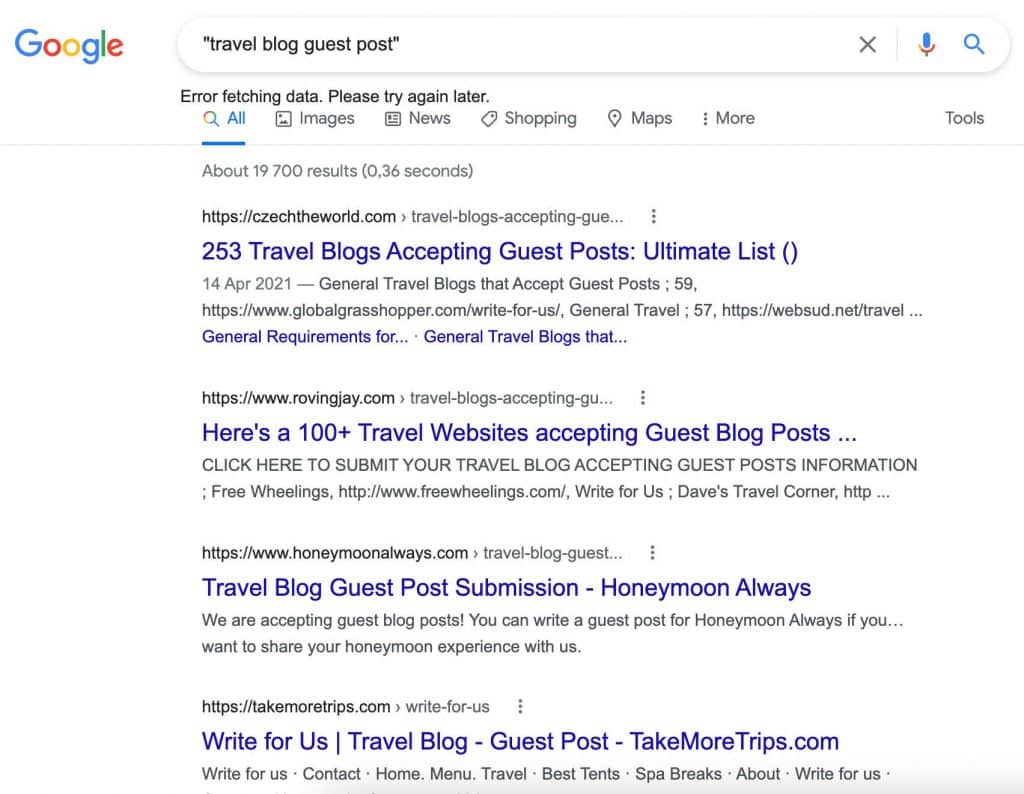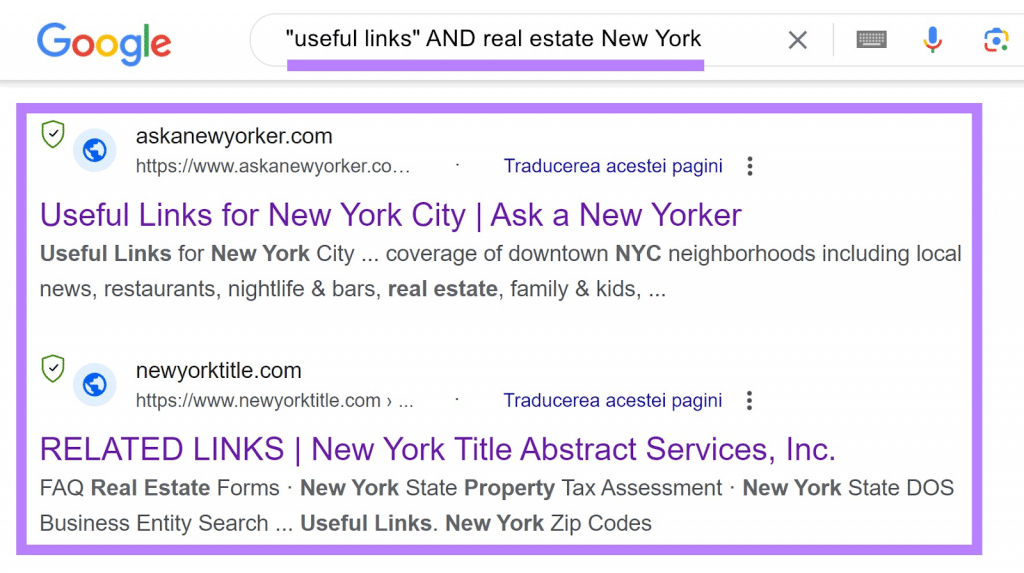This is your regular content writer and active SEO enthusiast again. Allow me to take you back to the beginning phases of my entrepreneurial endeavors. Starting an effective internet business was the plan , as it did many others. But as time passed, I realized that creating a strong online presence required more than just a visually good website and catchy taglines; it also required careful backlinking. Today I’ll go deep into backlinks, an SEO practice that is ver crucial.
Although they may appear to be too technical, backlinks are quite easy. These are simply hyperlinks from other websites that point to your own. Consider them as virtual votes of confidence. The more high-quality backlinks your website has, the more search engines, including Google, will see it as a reputable and valuable resource. And believe me when I say that your firm will benefit immensely from this. Stay tuned.
Key Takeaways
- Backlinks are like votes of confidence from other websites, telling search engines your website is valuable and trustworthy.
- Strong backlinks can significantly improve your website’s ranking in search results, leading to more organic traffic.
- Backlinks build brand awareness by exposing your brand to a wider audience.
- High-quality backlinks come from relevant websites with high domain authority.
- The best way to earn backlinks is to create high-quality, informative content that people naturally want to link to.
- Guest blogging, broken link building, and industry recognition are effective white-hat strategies for link building.
- Avoid black-hat tactics like buying backlinks, link exchanges, and link spamming, as they can harm your website.
- Building a strong backlink profile takes time and effort, but the long-term SEO benefits are well worth it
Understanding Backlinks: The Building Blocks of SEO

First, let’s go over the “what” of backlinks before we get into the “why” and “how”. Because we can all acknowledge that technical language can be confusing at times, assume you own a great neighborhood bakery that is well-known for its exquisite blueberry muffins. When a food blogger visits your bakery, she immediately falls in love with your egg muffins (naturally!) and posts a glowing review with a link to your bakery’s website on her blog. It is a backlink, that link! It’s the food blogger endorsing your bakery and directing their readers—potential customers—your way.
Just like, when Larry Page and Sergey Brin created Google in 1995, they recognized that while current search engines such as Yahoo could help customers locate relevant websites, they couldn’t discern which results were high quality.
According to Page and Brin, citations have long been considered a proxy for academic excellence. In other words, a citation suggests that the original work is credible and noteworthy enough to be referred. So, when scholars publish a study, its success is judged in part by how many times other researchers cite it in later work.
As a result, Google developed its search engine using backlinks, which are the online version of citations and indicate higher quality websites with more of them. Other search engines adopted a similar strategy. Although the criteria used by search engines to evaluate sites have evolved since then, backlinks remain a vital component of high-quality websites and are essential to success in search engine optimization.
Therefore, you should optimize your e-commerce website so that potential customers may find you, as search engines identify which websites are most relevant for people looking for specific keywords and then display the results in order of their relevancy.
Types of SEO Backlinks

According to search engines, not all backlinks are equal. Although backlinks may not always contribute to your quality rating, they are similar to a vote of confidence from another website. Users who use spam or fraudulent ways to obtain backlinks in an attempt to manipulate the system are blocked by search engines.
To judge the quality of a website based on its link profile, search engines such as Google categorize links into the four following categories: I will briefly discuss each and its impact on your website.
#1. Follow links
Follow links are common links that connect websites. They get their names from crawlers tracking them and reporting on their worth. A tennis blogger, for example, may link to another golf blog on their “Partners” page or to one of their favorite golf stores in a blog post. This means that search engines rely on links linking to a website to determine its reliability and authority, which is vital for SEO. (If HTML or crawlers do not indicate otherwise, a link is considered to be followed.)
#2. Nofollow Links
Websites can add a nofollow HTML code to their external links. This code expressly informs the crawler that the website does not endorse the site to which it is linked.
There are several reasons why you might do this. Forums and social media sites cannot regulate what their users share, therefore they nofollow their connections. So, blogs implement nofollow links in their comment sections to prevent spam sites from commenting with links to improve Google relevance.
#3. Sponsored Links
There are numerous reasons why one website could pay another for a backlink, including sponsored editorial content, adverts, and paid endorsements. In these circumstances, search engines want you to include a sponsored tag with your links, similar to nofollow. This is because it informs search engines that there is a business relationship involved in the link, thus urging them to dismiss it. Also, search engines penalize sites with untagged sponsored links by lowering their ranking places.
#4. Guest Post Backlinks
Guest post backlinks are backlinks that you get by authoring and publishing material on other websites, usually in your field or sector. They boost your website’s credibility and importance in your industry, providing SEO value while also delivering targeted traffic. So, select respectable websites for guest posting, and make sure your work is well-researched and adds value to the host site’s readership.
#5: Image Backlinks
An image backlink is a linkable image (credited) to a website or page. Why should I care about image backlinks? According to a Semrush analysis, webpages with graphics receive 555% more high-quality backlinks. Here are the most popular types of images that tend to receive backlinks passively:
- Infographics.
- Graphs.
- Product photos.
- Maps.
- Visual examples that support text.
Finally, use Google Reverse Image Search to see exactly where your image is being used. If someone is utilizing your image without crediting you, contact the webmasters to claim your backlink.
#6: Video Backlinks
When you post videos to platforms like YouTube, the links appear in the video descriptions, comments, or video credits. Every link in YouTube material is “nofollow.”
While backlinks on YouTube do not provide direct SEO link juice, they can still be seen through YouTube searches and create traffic. So, to maximize the SEO impact of video titles, descriptions, and tags, include important keywords in them.
Benefits of Backlinks
Now that we understand the fundamentals, let’s discuss traffic. Building backlinks is more than just a way to boost your self-worth; they also help your website become more authoritative and move up the search engine results page rankings. In other words, your website will experience a constant flow of organic visitors if you have the correct backlinks in place.
According to a recent study, over 46% of SEO experts spend $5,000–$10,000 per month on link building. Nevertheless, an astounding 66.31% of pages lack backlinks, per Ahrefs. Furthermore, Google does not send any organic search traffic to 90.63% of pages.
Now, you may be asking yourself, “Why should I worry about backlinks? The short answer is that they can drastically alter your internet presence. Here’s how:
#1. Climbing Search Engine Ranking
Remember how I mentioned that backlinks are search engines’ votes of confidence? That is not a moderate exaggeration. Search engines consider backlinks to be a reliable indicator of your website’s authority and relevancy. This means that the more high-quality backlinks your website has, the higher its position in search results will be. When a significant number of websites link back to yours, search engines notice and infer that your site must be of value. Shows it to more people, Increased organic traffic is the outcome of consumers actively seeking what you have to give for free.
Years ago, I spoke with a local plumber who struggled to recognize his website. His website looked excellent, but he wasn’t doing well in relevant searches. We used a white-hat backlink-building technique (more on that later!), and after a few months, he witnessed a huge boost in organic traffic. Guess what People looking for plumbers in his region were finally finding his website, resulting in a boom in new clients and a more satisfied plumber!
#2. Huge Website Traffic
Backlinks are like small road signs on the internet, directing users to your website. A backlink successfully directs someone to your website every time they click on it, eager to explore what else you have to offer. Bringing in new clients who are already interested in what you do, targeted traffic has the potential to revolutionize your business.
#3. Building Brand Awareness
Backlinks are a very efficient means of raising company awareness. When your website is linked to high-authority websites, you effectively get free promotion to a broader audience. People become interested when they see your brand name on various websites. They might click through to your website or simply recollect your brand name for later. Improved brand awareness can lead to more website views, leads, and, ultimately, revenue.
The Trust Factor Backlinks are an excellent way to establish yourself as a credible authority in your subject. When credible websites link to yours, people understand that you are a reliable source of information. People are more likely to trust and do business with a website that is regarded as an expert in its field.
#5: Using Backlinks to Get Competition Intelligence
Backlinks play a crucial role in ranking pages and websites in search engine results pages (SERPs). Therefore, knowing who links to your competitors can help you identify potential sources for earning links to improve your ranking.
Let’s use an analogy to demonstrate this. Let’s say you want to find a new eatery. You see two options: Restaurant B has excellent evaluations from multiple reliable food critics, and Restaurant A has none at all on the internet. Which one do you think you’ll try first? Do you mean restaurant B? Backlinks function similarly. They help establish confidence and trust in your company, much like those glowing reviews do.
What Makes a High-Quality Backlink?
Now that the importance of backlinks has been proven, let’s go specific: what exactly constitutes a high-quality backlink? since not all backlinks are made equal, much like that blueberry muffin you decided not to share since it seemed a little underbaked. What sets the winners apart from the losers is this:
#1. Relevance
Imagine your website being linked to by the same food blogger who praised your egg muffins in a blog article on wholesome salad recipes. Although the connection is functional, it isn’t very important to your bakery. Backlinks that are relevant to the content they are placed on are given preference by search engines. Therefore, a backlink from a website about your niche or a similar industry is considerably more valuable than a link from a website about an unrelated topic.
Search engines do not view every website as being created equal. A website’s online reputation and reliability are largely determined by its “domain authority,” which is higher for certain websites. Similar to receiving a referral from a reputable industry leader, a backlink from a high-authority website in your topic is far more valuable than a link from a website with a low domain authority.
#3. Link Placement
It also matters where a backlink is positioned on a webpage. The ideal location for your backlinks is naturally integrated into the language of the webpage’s body content. This demonstrates that the link is not merely an afterthought but rather relevant to the surrounding information. In general, links hidden in sidebars or footers of websites are less important.
#4. Anchor Text
The impact of Keywords Anchor text is the clickable text that appears when a user hovers over a link. When websites link to yours, they can select the anchor text to use. Ideally, the anchor text should be relevant to your website and may include keywords you wish to rank for. For example, if you run a bakery that specializes in grain-free goodies, you could want your backlinks to include anchor text like “best gluten-free bakery” or “order delicious gluten-free desserts.” This informs search engines what your website is about and can provide a little SEO boost.
#5. Follow vs. nofollow links
A nofollow backlink is a link attribute that advises Google not to follow the link and serves as a hint not to pass authority. The followed link lacks that characteristic, as well as the “sponsored” and “UGC” properties.
Because nofollow backlinks rarely affect results, it’s advisable to focus on acquiring followed links. However, because “nofollow” is merely a hint now, obtaining a nofollow link from a related high-authority source may still be a good idea. These types of backlinks can be identified using filters in Site Explorer’s Backlinks report.
#6. Destination
Because Google rates pages rather than entire websites, it is ideal to create links that connect directly to the page you want to rank.
However, acquiring links to certain page kinds is more difficult. For example, connecting to commercial pages can be challenging because people prefer to link to helpful information.
To remedy this, you can utilize internal links to pass authority from pages that get a lot of links to your vital but “boring” pages.
How to Get Backlinks

Image by rawpixel.com on Freepik
Am certain by now, you’re convinced – backlinks are fantastic! But how do we go about getting these valuable links? Here’s where the fun begins: creating backlinks the right way, commonly known as “white hat” tactics. so focus on making genuine connections and providing excellent material that people will naturally want to link to.
#1. Content

This may seem like an old saying, but it is the golden rule of backlink building. When you develop high-quality, educational, and entertaining content that appeals to your target audience, you are setting yourself up for natural backlinks. People will be more willing to share your information, incorporate it into their work, and link back to your website as a valued resource. So spend time creating educational blog entries, intelligent market studies, or visually stunning infographics – anything that will benefit your audience.
#2. Guest Blogging

Guest blogging is a great strategy to get high-quality backlinks from related websites. The goal is to approach websites in your niche and offer to write a guest blog article for them. This allows you to share your knowledge with a new audience while receiving a useful backlink to your website from the blog post (preferably with relevant anchor text!). Just remember to pick websites with an excellent track record and an audience similar to yours.
#3. Broken Link Building

The Fixer-Upper Strategy: Here’s a great strategy: identify broken links on websites in your niche and recommend your content as a replacement. It’s like becoming the internet’s friendly neighborhood repairman! Assume you run a website on sustainable gardening practices. You come upon a website with a broken link to a page that formerly gave composting recommendations. You might contact the website’s owner and recommend your detailed composting instructions as an alternative. In this manner, you’re not only assisting them in fixing a broken link, but you may also receive a useful backlink as a result.
#4. Industry Awards and Recognition

Gaining recognition and accolades from the industry is a great approach to getting attention for your website and building backlinks. As a reputable source, other websites are more likely to link to yours when you’re acknowledged as a leader in your industry. Thus, stay aware of relevant industry awards, actively participate in your specialized community, and work toward becoming recognized as a thought leader.
#5. Use HARO

Help a Reporter Out, or HARO is a great approach to obtaining high-authority backlinks from news websites. HARO links reporters with sources. Additionally, there’s a strong possibility a journalist who cites your work will include a link. This is how HARO functions:
- Register as a source with HARO.
- Reporters seeking sources will send you three emails a day
- Give your credentials and some advice in response.
Simple, right?? A reporter will provide you with a hyperlink if you provide them with a quote. That is the only thing required.
Consider also the checklist below,
Avoiding Common Backlinking Pitfalls: Black Hat Techniques to Stay Away From
We’ve discussed the ethical, or white-hat, strategies for increasing backlinks. Now, let’s talk about the bad, black-hat SEO methods that might lower your website’s ranking and result in search engine penalties. Remember, you should avoid adopting the following shortcuts.
#1. Purchasing Backlinks
Buying backlinks from websites that promise fast results may be appealing. However, search engines are intelligent and can rapidly recognize these low-quality links. Purchasing backlinks can result in large fines and have a bad impact on your website’s rating.
#2. Link Exchanges
While swapping links with a few related websites may appear safe, frequent link exchanges can appear artificial to search engines. Avoid automatic link exchanges and instead focus on establishing genuine relationships with other websites.
#3. Low-Quality Directories
Getting included in hundreds of low-quality directories may seem like a fantastic way to acquire backlinks, but it’s a trap. Search engines devalue links from these directories and may even punish you for them. So, focus on obtaining backlinks from high-quality, relevant domains.
#4. Link Spamming
Spamming comment sections, forums, or guestbooks with links to your website is a certain method to get blacklisted by search engines and harm your online reputation. It’s an aggressive strategy that won’t work and may harm your website in the long run.
This is because bad links will waste your time. After all, search engine algorithms are rather advanced. In the best-case scenario, they will not affect your rating. At worst, they can lead your pages to rank lower in Google or not appear at all.
Monitoring and Analyzing Backlink Performance
Lastly, but most definitely not least, let’s discuss monitoring your backlink profile. What use is a backlink, after all, if you can’t quantify its influence? Thankfully, you have access to an array of tools and techniques for tracking backlinks and their impact on the functionality of your website.
Increasing your website’s search engine ranks for your chosen keywords can boost organic search traffic and conversions, which is the aim of developing your backlink profile.
But there isn’t a direct correlation between backlinks and organic traffic. Even one new backlink can significantly impact traffic, whilst dozens of existing backlinks may only result in a negligible gain. It can often take weeks for rankings to shift.
Thus, most SEO experts monitor the following so-called leading measures of backlink performance in addition to the so-called lagging metrics of search engine ranks and organic traffic:
#1. Google Search Console
Google Search Console is a free tool for website owners that allows you to track inbound links. For more thorough tracking, many SEO specialists additionally employ premium tools from STAT or Ahrefs.
Although search engines do not provide a score to your backlink profile, several third-party programs do, and they range from 1 to 99. The most popular tools are Ahrefs (domain rating) and SEMRush (domain authority). These tools use a range of data, including traffic from backlinks and organic search traffic, to assess the trustworthiness of your website. The data doesn’t lie, therefore don’t skip this important stage in your backlinking process.
Conclusion
Backlinks are an integral component of any effective SEO strategy. They work as a vote of confidence for search engines, increasing your website’s ranking, driving organic traffic, and eventually assisting you in achieving your business objectives. So, by focusing on producing high-quality content, cultivating genuine relationships, and employing white-hat backlink-building tactics, you can build a strong backlink profile that will catapult your website to long-term success.
References
- blog.hubspot.com
- .shopify.com
- .searchenginejournal.com
- wpbeginner.com
- mailchimp.com
- A STEP-BY-STEP GUIDE TO GETTING AN AFFILIATE LINK FOR AMAZON
- Idea Generator
- Affiliate Marketing Programs: A Comprehensive Guide to The Top Affiliate Marketing Programs
- The Search Engine Optimization: A Comprehensive Guide for Business Success
- HOW TO INCREASE GOOGLE REVIEWS: Strategies With Examples(






